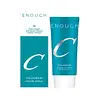What's inside
What's inside
 Key Ingredients
Key Ingredients

 Benefits
Benefits

 Concerns
Concerns

 Ingredients Side-by-side
Ingredients Side-by-side

Ethylhexyl Methoxycinnamate
UV AbsorberDiethylamino Hydroxybenzoyl Hexyl Benzoate
UV FilterBis-Ethylhexyloxyphenol Methoxyphenyl Triazine
Skin ConditioningWater
Skin ConditioningButylene Glycol
HumectantGlycerin
HumectantCaprylyl Methicone
Skin ConditioningCaprylic/Capric Triglyceride
MaskingIsostearic Acid
CleansingTitanium Dioxide
Cosmetic ColorantPEG-12 Dimethicone/PPG-20 Crosspolymer
Potassium Hydroxide
BufferingPhenoxyethanol
PreservativeAcrylates/C10-30 Alkyl Acrylate Crosspolymer
Emulsion StabilisingXanthan Gum
EmulsifyingTocopherol
AntioxidantAluminum Hydroxide
EmollientBHT
AntioxidantZinc Oxide
Cosmetic ColorantArginine
MaskingMagnesium Ascorbyl Phosphate
Antioxidant1,2-Hexanediol
Skin ConditioningTheobroma Cacao Seed Extract
AntioxidantAlpha-Arbutin
AntioxidantLauroyl Lysine
Skin ConditioningPhytic Acid
Sodium Malate
HumectantHydrogenated Lecithin
EmulsifyingPvp
Emulsion StabilisingSilver Oxide
AntimicrobialFullerenes
AntimicrobialGlycyrrhiza Glabra Root Extract
BleachingGlycosphingolipids
EmollientHydrogenated Lysolecithin
EmulsifyingMalic Acid
BufferingEthylhexyl Methoxycinnamate, Diethylamino Hydroxybenzoyl Hexyl Benzoate, Bis-Ethylhexyloxyphenol Methoxyphenyl Triazine, Water, Butylene Glycol, Glycerin, Caprylyl Methicone, Caprylic/Capric Triglyceride, Isostearic Acid, Titanium Dioxide, PEG-12 Dimethicone/PPG-20 Crosspolymer, Potassium Hydroxide, Phenoxyethanol, Acrylates/C10-30 Alkyl Acrylate Crosspolymer, Xanthan Gum, Tocopherol, Aluminum Hydroxide, BHT, Zinc Oxide, Arginine, Magnesium Ascorbyl Phosphate, 1,2-Hexanediol, Theobroma Cacao Seed Extract, Alpha-Arbutin, Lauroyl Lysine, Phytic Acid, Sodium Malate, Hydrogenated Lecithin, Pvp, Silver Oxide, Fullerenes, Glycyrrhiza Glabra Root Extract, Glycosphingolipids, Hydrogenated Lysolecithin, Malic Acid
Butylene Glycol
HumectantEthylhexyl Salicylate
UV AbsorberOctocrylene
UV AbsorberTitanium Dioxide
Cosmetic ColorantNiacinamide
SmoothingGlyceryl Stearate
EmollientPotassium Cetyl Phosphate
EmulsifyingPhenoxyethanol
PreservativeIsohexadecane
EmollientLithium Magnesium Sodium Silicate
AbsorbentAdenosine
Skin ConditioningSorbitan Oleate
EmulsifyingAtelocollagen
Skin ConditioningDesamido Collagen
Skin ConditioningHydrolyzed Collagen
EmollientSoluble Collagen
HumectantOat Amino Acids
Skin ConditioningCollagen
MoisturisingProcollagen
Skin ConditioningButylene Glycol, Ethylhexyl Salicylate, Octocrylene, Titanium Dioxide, Niacinamide, Glyceryl Stearate, Potassium Cetyl Phosphate, Phenoxyethanol, Isohexadecane, Lithium Magnesium Sodium Silicate, Adenosine, Sorbitan Oleate, Atelocollagen, Desamido Collagen, Hydrolyzed Collagen, Soluble Collagen, Oat Amino Acids, Collagen, Procollagen
Ingredients Explained
These ingredients are found in both products.
Ingredients higher up in an ingredient list are typically present in a larger amount.
Butylene Glycol (or BG) is used within cosmetic products for a few different reasons:
Overall, Butylene Glycol is a safe and well-rounded ingredient that works well with other ingredients.
Though this ingredient works well with most skin types, some people with sensitive skin may experience a reaction such as allergic rashes, closed comedones, or itchiness.
Learn more about Butylene GlycolPhenoxyethanol is a preservative that has germicide, antimicrobial, and aromatic properties. Studies show that phenoxyethanol can prevent microbial growth. By itself, it has a scent that is similar to that of a rose.
It's often used in formulations along with Caprylyl Glycol to preserve the shelf life of products.
Titanium dioxide is a mineral UV filter widely used in sunscreens and cosmetics.
It is one of only two UV filters officially classified as “mineral” by regulatory agencies, the other being zinc oxide.
Titanium dioxide provides broad-spectrum protection mostly in the UVB and UVAII range, with some protection in the UVAI range.
While its UVA protection isn’t as strong as zinc oxide’s, the difference is minor.
A common myth is that mineral UV filters reflect UV light. However, modern research shows titanium dioxide absorbs UV radiation like chemical filters (~95% absorption & 5% reflection).
Thanks to its non-irritating nature, titanium dioxide is suitable for sensitive, acne-prone, or redness-prone skin. It is unlikely to cause "eye sting" like other sunscreen ingredients.
A major drawback of this ingredient is its white cast and thick texture. This is why mineral sunscreens often leave a white cast and are less cosmetically elegant than chemical/hybrid sunscreens.
To improve white cast and spreadability, micronized or nano-sized titanium dioxide is often used.
There are ongoing concerns surrounding nano-titanium oxide's impact on marine ecosystems.
There is no conclusive evidence that any form of titanium oxide (or any other sunscreen ingredients) will cause harm to marine ecosystems or coral reefs. The science is still developing but many consumers are keeping a close eye on this issue.
Please note, many destinations have reef-safety sunscreen rules. For instance, the U.S. Virgin Islands advises all visitors to use non-nano mineral sunscreens.
Nano mineral sunscreens once raised safety concerns about absorption into skin.
Extensive research has shown that they do not penetrate healthy or damaged skin; they remain safely on the surface and the top layer of dead skin (stratum corneum).
You'll likely find titanium dioxide bundled with alumina, silica, or dimethicone. These ingredients help make titanium dioxide highly photostable; this prevents it from interacting with other formula components under UV light.
Learn more about Titanium Dioxide